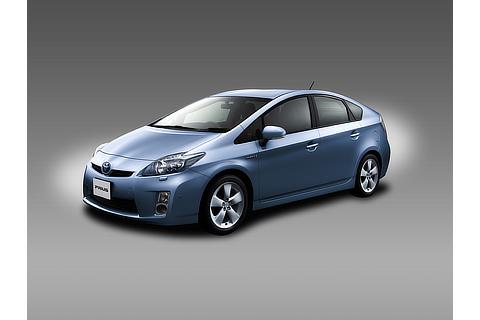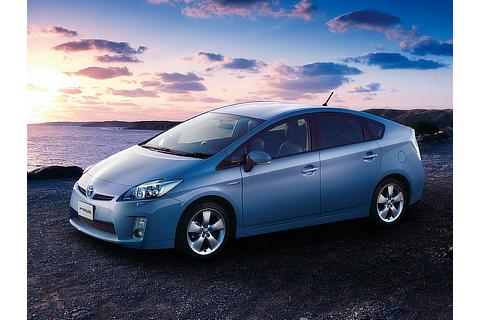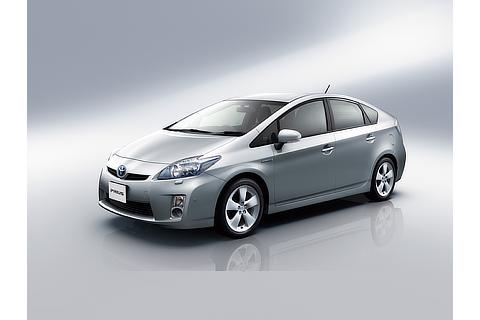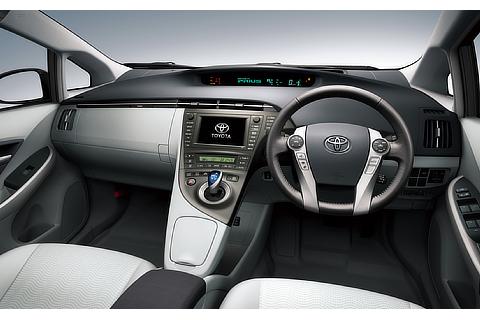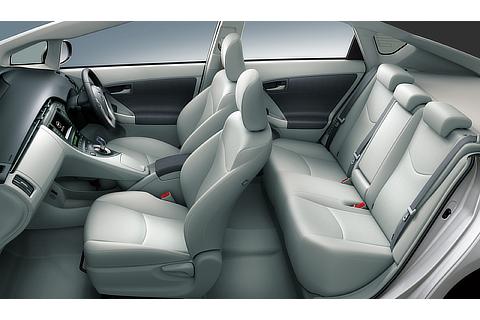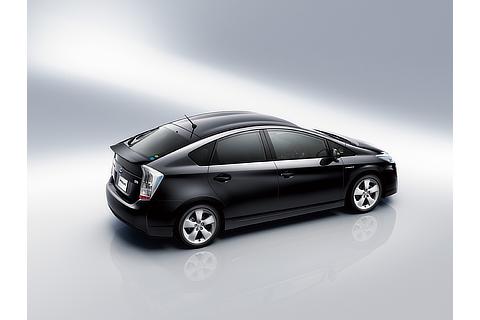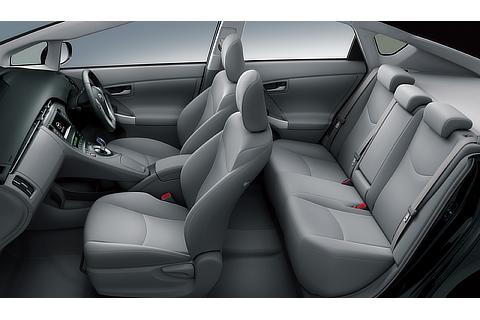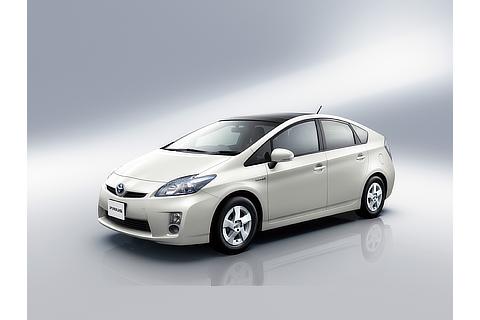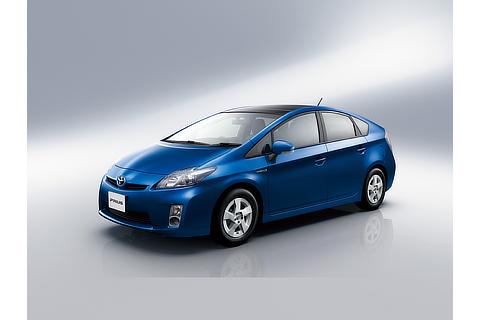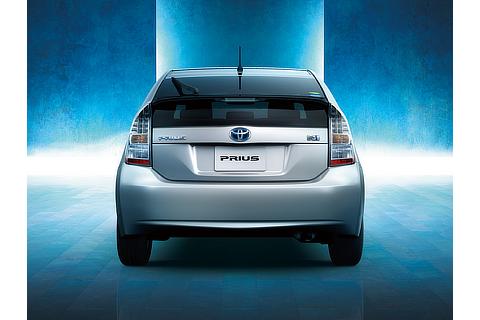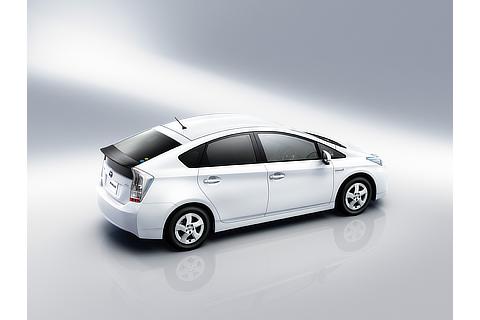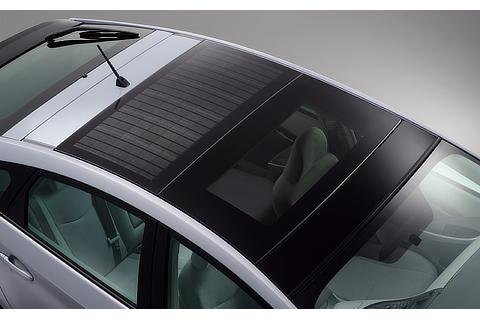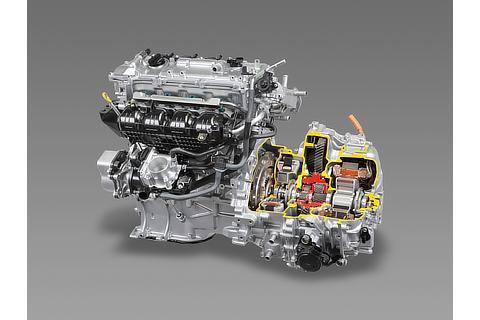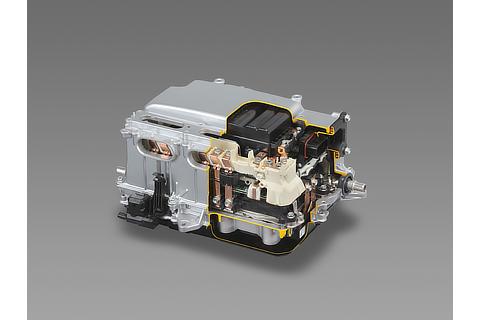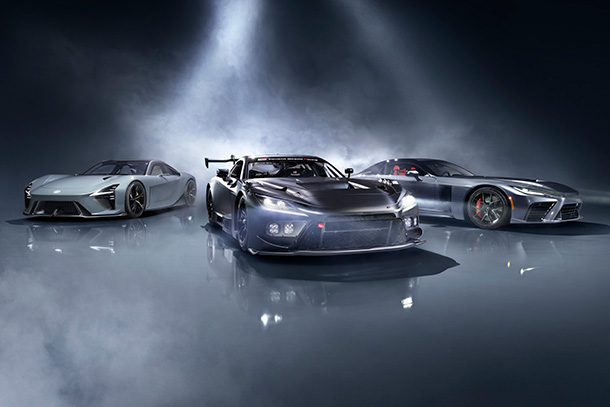May 18, 2009
Toyota Launches Third-generation 'Prius'Hybrid System, Aerodynamic Advances Achieve World's Best Fuel Efficiency
Tokyo―TOYOTA MOTOR CORPORATION (TMC) announces the launch in Japan today of the third-generation "Prius", which combines superior environmental performance with improved driving pleasure.
Like its predecessors, the new Prius remains worthy of its name―Latin for "to go before"―by being equipped with the latest in TMC hybrid and other environmentally friendly technology. Its Toyota Hybrid System II (THS II) has been more-than-90-percent designed anew and synergizes with one of the best aerodynamic performances in the world. This synergy combines with other advances to achieve a world-leading1 fuel efficiency of 38.0km/L2, while providing driving performance on par with that offered by a vehicle with a larger 2.4-liter engine. The new Prius comes with four driving modes to match the requirements of specific driving environments, as well as with a solar-powered ventilation system and other dynamic features.
-

- Prius G "Touring Selection"
(with options)
Since becoming the world's first mass-produced hybrid vehicle in 1997, the Prius has been sold in more than 40 countries and regions around the world, with cumulative sales having exceeded 1.25 million units as of March 31, 2009. The third-generation Prius will be released in stages in more than 80 countries and regions, as part of an effort to further popularize hybrid vehicles worldwide.
Monthly sales target for Japan
10,000 units
Assembly Plant
Tsutsumi Plant, Toyota Motor Corporation
Fujimatsu Plant, Toyota Auto Body Co., Ltd.
Manufacturer's Suggested Retail Prices
| Hybrid System | Powertrain | Price* (including consumption tax) | ||
|---|---|---|---|---|
| L | THS II with reduction gear |
Front-engine, front-wheel drive |
2,050,000 yen | |
| S | 2,200,000 yen | |||
| "Touring Selection" | 2,450,000 yen | |||
| G | 2,450,000 yen | |||
| "Touring Selection" | 2,700,000 yen | |||
| "Leather Package Touring Selection" | 3,270,000 yen | |||
*Excludes recycling fees
Vehicle Outline
Advanced hybrid performance
The engine and transaxle boast higher efficiency while the motor, inverter and other units are smaller, lighter and more efficient. The THS II has been more-than-90-percent redesigned and includes a 1.8-liter engine, a motor and a reduction gear. Synergetic effects generated between the hybrid system and the vehicle as a whole, including its one-of-the-best-in-the-world aerodynamic performances (with a coefficient of drag value of 0.25), achieve a world-best1 fuel efficiency of 38.0km/L2, and deliver driving performance equivalent to that of a 2.4-liter engine. (Under the Japanese Ministry of Land, Infrastructure, Transport and Tourism JC08 test cycle, the new Prius has a fuel efficiency of 32.6km/L.)
Higher engine efficiency
The adoption of a newly developed 1.8-liter gasoline engine reduces engine rpm during high-speed driving and raises fuel efficiency at high speeds. The ample output and torque contribute to comfortable cruising.
TMC's first electric-powered water pump that draws its energy from the battery reduces friction loss through precise control of the coolant water flow rate and an electrically operated drive belt.
A high-expansion-ratio engine results in substantially less piston-pumping loss and internal friction, while cooled exhaust-gas recirculation (EGR) and roller rocker arms raise combustion efficiency.
An exhaust heat recovery system uses exhaust heat, which in the past was discarded, for the interior heater and for warming up the engine.
Key units made smaller and lighter
The transaxle is smaller and lighter with a compact, high-speed motor that achieves increased output, and a reduction gear that increases torque.
The power control unit uses a boost converter to raise system voltage to a maximum of 650V, but is substantially smaller and lighter thanks to a redesign of the cooling system.
The hybrid battery features high-output, nickel-metal hydride cells and features smaller cooling intake/exhaust ducts and fans.
| Engine | Model | 2ZR-FXE |
|---|---|---|
| Displacement | 1,797 cc | |
| Maximum output | 73 kW (99 PS)/5,200 rpm | |
| Maximum torque | 142 N-m (14.5 kgf-m)/4,000 rpm | |
| Motor | Maximum output | 60 kW (82 PS) |
| Maximum torque | 207 N-m (21.1kgf-m) | |
| Complete system | Maximum output* | 100 kW (136 PS) |
| Battery | Nickel-metal hydride | |
*Using both engine power and electric motor power; based on TMC calculations
For eco-minded operation, an Eco-Drive Mode puts emphasis on fuel efficiency, while an Eco-Drive Monitor on the central instrument panel supports environmentally considerate driving. The monitor can display: 1) the Hybrid System Indicator, which shows status of accelerator and energy regeneration, 2) one-minute or five-minute fuel efficiency rates, 3) a fuel efficiency history that shows average fuel efficiency and maximum fuel efficiency for the past five trips, and 4) real-time energy consumption. The monitor can also be linked to a navigation system (on vehicles with a hard-disc-drive navigation system and the Prius Super Live Sound System) to display on the navigation system screen the degree of environmentally considerate driving and driving tips.
A Power Mode allows more agile driving, while optimization of the platform achieves smooth steering, cruising stability, a smooth ride and superior straight-driving stability at high speeds.
Electric Vehicle (EV) Drive Mode uses just the motor for extremely quiet cruising, while effective placement of sound-absorbing materials and vibration-controlling materials on the high-rigidity body achieve outstanding quietness.
Design pursues both function and beauty
Comprehensive aero-management based on aerodynamic theory has been used to further evolve the Prius' characteristic triangular silhouette, contributing to achieve one of the best aerodynamic performances in the world with a coefficient drag value of 0.25.
- Aero-corner shape of front and rear bumpers accentuates sides of corners, while longer rear spoiler enhances aerodynamic performance
- Front pillars moved forward 25mm and placed at oblique angle and roof peak moved back to improve rear-seat roominess and create dynamic proportions, while character lines extending from front to rear create refined feel and improve aerodynamic performance by helping reduce drag
- Both 17-inch and 15-inch aluminum wheels contribute to better aerodynamic performance
The front and rear emblems and the headlight extensions are Hybrid Synergy Blue, the color that has come to symbolize TMC's hybrid vehicles.
The interior emphasizes human sensibilities and features an advanced cockpit with improved visibility and operability as well as a high-quality feel that exudes human warmth.
- Clear distinction made between Display Zone, which displays information, and the Command Zone, which is for operations
- Center cluster and console have been integrated and shift-by-wire technology adopted to allow placement of shifter knob in easiest operating position
- Wide instrument panel features surface pattern based on leaf veins to create ecological image
Equipment ahead of the times
The world's first Touch Tracer Display features touch controls for the audio system, air conditioning and Eco-Drive Monitor, and is located near the driver's fingers on the steering wheel, with the display of these operations located on the centrally positioned instrument panel.
TMC's first solar-ventilation system uses power generated by solar panels installed on the moon roof to ventilate the vehicle interior. The world's first3 remote air conditioning system can be operated from outside the vehicle using a switch on the Smart Key.
The Intelligent Parking Assist System has a pre-support function that instructs the driver how to position the vehicle for it to be assisted into a parking space.
The LED headlights feature reduced power-consumption low beams, and a pop-up headlight cleaner located on the lower portion of the headlights to remove dirt.
The driver's seat cushion, scuff plates, and other interior components are made of Ecological Plastic, a material the reduces environmental impact.
Evolved basic performance
Slimmer front seatbacks and other adjustments create a roomier interior space. A smaller hybrid battery and its optimized placement result in a cargo area that is approximately 30 liters larger than that in the second-generation Prius.
An available new Pre-crash Safety System (millimeter-wave radar type) and standard Steering-assisted Vehicle Stability Control (S-VSC), six Supplemental Restraint System (SRS) airbags and an Active Headrest for the driver and front passenger seat pursue safety performance at the highest level4.
The "Global Outstanding Assessment" body construction has been further developed to create an advanced collision-safety structure by incorporating the concept of omni-directional compatibility.
Improvements in the body structure also reduce the likelihood of pedestrian head injuries to achieve one of the highest levels of injury prevention.
All vehicles in the series meet the new 2015 Japanese fuel efficiency standards set out under the Law Concerning the Rational Use of Energy and emissions have also been reduced with levels 75% lower than the 2005 standards under the Ministry of Land, Infrastructure, Transport and Tourism approval system for low-emission vehicles, which is currently the strictest standard in Japan for emissions, thus qualifying for incentives under the Japanese government's taxation system for environmentally friendly vehicles.
TMC employed its Eco-Vehicle Assessment System (Eco-VAS)―an original, comprehensive, environmental impact assessment system―when redesigning the vehicle series. Eco-VAS includes setting targets at the start of vehicle development to help reduce environmentally harmful factors by such means as the balanced reduction of CO2 emissions. Life-cycle assessment was carried out to achieve reduction in air contaminants and CO2 from vehicle throughout its lifecycle.
Review of materials, processing methods and adhesives used for interior parts reduced volatile organic compounds and unpleasant interior odors to levels compliant with voluntary industry standards.
"Welcab": Vehicle equipped with features to aid people with disabilities
A new Lift-up Front Passenger Seat model that features a seat that slides down and to the outside of the vehicle to facilitate ingress and egress has been added to the lineup.
Four Welcab Friendmatic models have been designed (Types III and IV are scheduled for release in July 2009). Type II and Type IV are equipped with a remote-controlled power driver's seat with a seat-lowering function that facilitates moving to and from a wheelchair. Type III and Type IV are equipped with a device that electrically stows a wheelchair on the roof using a special-purpose remote control.
Welcab Manufacturer's Suggested Retail Prices
| Grade | Hybrid System | Powertrain | Price* (including consumption tax) | |
|---|---|---|---|---|
| Welcab Lift-up Front Passenger Seat model (Type A) | S | THS II with motor speed reduction device |
Front-engine, front-wheel drive |
2,355,000 yen |
| G | 2,558,000 yen | |||
| Welcab Lift-up Front Passenger Seat model (Type B) | S | 2,425,000 yen | ||
| G | 2,628,000 yen | |||
| Welcab Friendmatic model (Type I) | S | 2,291,000 yen | ||
| G | 2,504,000 yen | |||
| Welcab Friendmatic model (Type II) | S | 2,497,000 yen | ||
| G | 2,700,000 yen | |||
| Welcab Friendmatic model (Type III) | S | 2,679,000 yen | ||
| G | 2,882,000 yen | |||
| Welcab Friendmatic model (Type IV) | S | 2,994,000 yen | ||
| G | 3,197,000 yen |
*Excludes recycling fees. All vehicles exempt from consumption tax except Welcab Friendmatic model (Type I), which is subject only when not equipped with the specified driver's devices at time of purchase.
1Compared to other gasoline-powered passenger vehicles; as of April 2009, as surveyed by TMC
2Measured using the 10-15 test cycle of the Japanese Ministry of Land, Infrastructure, Transport and Tourism
(MLIT); applicable to L grade vehicles only
3As of April 2009, as surveyed by TMC
4In comparison with vehicles of similar engine displacement
